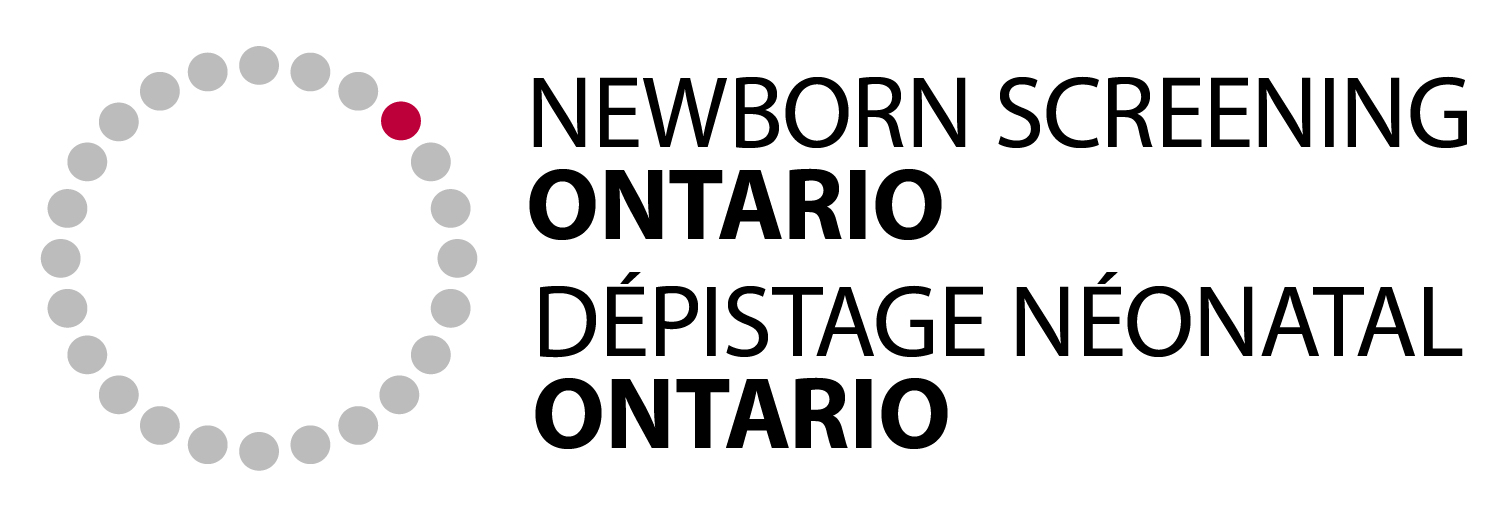- Hearing screening helps find babies who have permanent hearing loss (PHL) or have a higher chance of developing it in early childhood.
- Finding hearing loss as early as possible allows children with PHL to get the support and services they need for the best language, social and educational outcomes.
GJB2-related Permanent Hearing Loss
At a glance
| Testing method(s): | Screening improves: | Interventions: |
| GJB2 common variant panel, reflexive testing of p.(V37I) variant | Speech, language, and developmental outcomes | Monitor, amplification, cochlear implantation, language development services |
What is risk factor screening for permanent hearing loss (PHL)?
- Screening for PHL risk factors is part of infant hearing screening.
- Risk factor screening for PHL looks for the most common environmental (congenital cytomegalovirus) and genetic (variants in GJB2 and SLC26A4 genes) causes of childhood PHL.
- This screening is done using the dried blood spot sample collected for routine newborn screening.
What is GJB2-related permanent hearing loss (PHL)?
- Variants (also called “mutations” or “pathogenic variants”) in the GJB2 gene can cause PHL. PHL can be present at birth (congenital) or develop in early childhood.
- GJB2-related PHL can affect some or all the sounds in the speech range and can cause hearing loss of any degree; mild, moderate, severe, or profound. It can impact one or both ears. GJB2-related PHL can sometimes stay the same (stable) or get worse (progressive). Sometimes we can predict how likely a baby is to have hearing loss, and how big the hearing loss will be based on the specific pathogenic variants identified.
- GJB2-related PHL does not cause any other symptoms or impact other body systems. This is called “non-syndromic”.
- GJB2-associated PHL runs in families in a way that is called “autosomal recessive”. Everybody has two copies of the GJB2 gene. The GJB2 gene makes a protein called connexin, which is important for the inner ear to work. When there are pathogenic variants in BOTH copies of the gene, the protein cannot do its job, and PHL can result.
- A person can have a pathogenic variant in only one copy of the GJB2 gene; this is called being a “carrier”. Carriers are not at increased risk for PHL. When both parents are GJB2 carriers, there is a 25% chance in each pregnancy to have a baby with two GJB2 variants who has a higher chance of PHL.
Screening positive for GJB2-related permanent hearing loss (PHL)
- Newborn Screening Ontario (NSO) will contact you If your baby screens positive for GJB2-related PHL.
- A screen positive GJB2 risk factor screening result means there is an increased chance for the baby to have PHL that is present from birth or that develops in early childhood. The specific chances depend on the genetic variants detected.
- A hearing test with an Infant Hearing Program (IHP) audiologist is the only way to find out if a baby has permanent hearing loss.
- The IHP audiologist will do several different tests to check a baby’s hearing. These tests help determine if there is hearing loss, which sounds the hearing loss is impacting, how much hearing loss there is, and if the hearing loss is permanent or not.
Possible follow-up test results
- Baby has permanent hearing loss (PHL)
- When PHL is identified, the IHP audiologist gives more information about the hearing loss. They explain what interventions, services, and supports the IHP offers to help.
- NSO sends a referral to an Ear, Nose, Throat (ENT) doctor (also called an otolaryngologist).
- Baby does not have PHL
- The IHP offers regular hearing testing during early childhood so that if PHL develops in the future, it is found as early as possible. This is called audiologic surveillance.
- Unclear if baby has PHL
- Rarely, the IHP audiologist is not able to complete all the testing required to determine if PHL is present or not. If this happens, a follow-up appointment is made to complete the testing.
- Children can have very good language and education success with any degree of hearing loss. To achieve this hearing loss needs to be found as early as possible, and interventions put in place for baby at a very early age.
- The right intervention for any baby depends on the type of hearing loss and how big it is. Equally important is the family’s choice regarding language development. Baby’s local IHP team including Audiologist, Family Support Worker, and Language Development specialist, will help the family plan and start interventions.
- Interventions often include regular hearing testing, hearing aids or cochlear implants, spoken language or sign language therapy.
Living with GJB2-related permanent hearing loss (PHL)
- GJB2-related hearing loss is the leading cause of permanent hearing loss in young children. That means that a lot is known about how to help these children and their families have the best outcomes for language, social and education goals. Baby’s local IHP team will provide families with support, resources, and lots of information tailored to that baby’s particular needs.
- For all children with PHL finding hearing loss early, putting an intervention in place early, and following that intervention plan closely gives the best chance for the best outcomes.
If your baby has screened positive for GJB2-related PHL, click here for more information.
Contact Us
Children’s Hospital of Eastern Ontario
415 Smyth Road
Ottawa, Ontario K1H 8M8
Toll-Free: 1-877-627-8330
Local: (613) 738-3222
Fax: (613) 738-0853
